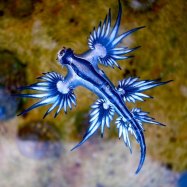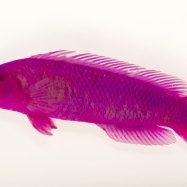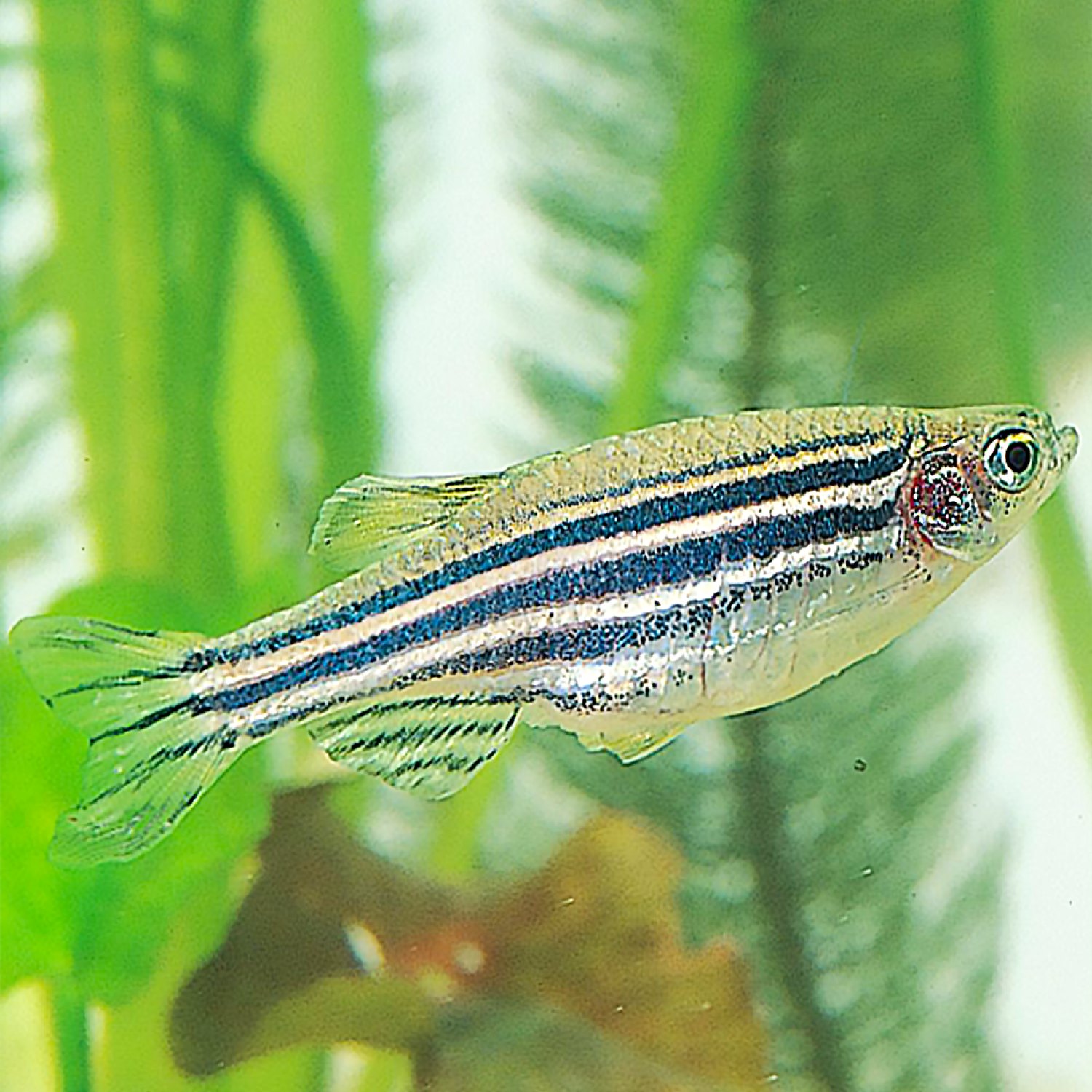
Zebra Fish
Up to 4 cm
Meet the Zebra Fish, a tiny fish with a big impact! These small but mighty creatures can grow up to 4cm long and are commonly found in rivers, streams, ponds, and tanks. Belonging to the Cyprinidae family, their sleek and elongated body shape allows them to navigate through the water with ease. Keep an eye out for this fascinating species on your next outdoor adventure! #ZebraFish #Cyprinidae #AnimalFacts #Wildlife
Animal Details Summary:
Common Name: Zebra Fish
Kingdom: Animalia
Habitat: Freshwater
Zebra Fish: The Marvels of Nature's Colorful World
Nature has a way of surprising us with its vast diversity and multitude of colors. From the vibrant hues of a rainbow to the striking patterns of a zebra, there is no end to the beauty that Mother Earth has to offer. And among this spectrum of colors lies a tiny freshwater fish that has captured the hearts of scientists and aquarium hobbyists alike – the zebra fish.Also known as Danio rerio, the zebra fish belongs to the animal kingdom, classified under the phylum Chordata and class Actinopterygii Zebra Fish. These small but mighty creatures are part of the Cyprinidae family and can be found in the order Cypriniformes. While they may seem like just another ordinary fish, there is more to this fascinating species than meets the eye.
A Fishy Habitat
The zebra fish is a freshwater species, meaning it can only survive in bodies of water such as rivers, streams, ponds, and tanks. These fish are native to South Asia, with their country of origin being India. In the wild, zebra fish are commonly found in rivers and streams in the northern and eastern parts of India, including the Ganges and Brahmaputra river basins.These fish are also well-suited to living in artificial habitats, making them a popular choice for aquariums around the world. They are highly adaptable and can thrive in a range of conditions, from small tanks to large bodies of water. It is no wonder that the zebra fish is a common sight in home aquariums and research labs.
The Omnivorous Appetite
In the animal kingdom, there are herbivores, carnivores, and omnivores – and the zebra fish falls into the latter category Zebra Shark. These fish have a varied diet, feeding on both plant and animal matter. In the wild, they feed on algae, bottom-dwelling insects, and smaller fish. In captivity, they can be fed a combination of flake food, live or frozen food, and plant-based foods, such as vegetables and fruits.This variety in their diet is not only essential for their growth and development but also plays a significant role in maintaining the ecosystem where they reside. As omnivores, they help keep the population of other freshwater insects in check, making them an essential part of their habitat's delicate balance.
An Alluring Appearance
One cannot talk about zebra fish without mentioning their striking appearance. As their name suggests, these fish have a distinct color pattern that resembles that of a zebra. They have a silvery-white body with five to six horizontal black stripes, running from their head to their tail.This unique coloration serves as a form of camouflage, helping them blend into their surroundings and avoid predators. In the wild, zebra fish are often found in murky waters, and their silver and black stripes help them blend in with the shadows of their habitat, making it easier for them to hide and escape from potential dangers.
A Streamlined Body Shape
Apart from their eye-catching stripes, zebra fish are also known for their elongated and streamlined body shape. This body shape is typical for fish that reside in fast-moving rivers and streams, and it works to their advantage. An elongated and streamlined body helps them move through the water with ease, navigating through strong currents or chasing their prey.The average length of a zebra fish is around 3-4 cm, making them relatively small. However, their small size does not hinder their agility or speed, which is crucial for their survival in the wild.
Fascinating Facts about Zebra Fish
Aside from their appearance and habitat, there are many interesting facts about zebra fish that make them stand out in the animal kingdom. Here are some of the most fascinating things about these tiny water creatures:- Zebra fish are often used in scientific research due to their genetic similarities to humans. This makes them a valuable tool in studying diseases and discovering new treatments.
- These fish are social creatures and prefer to live in groups, making them a popular choice for community tanks.
- They are also known for their unique mating rituals, with the male zebra fish building bubble nests to attract females.
- Zebra fish are sensitive to light and are often used in light sensitivity studies for their ability to detect changes in brightness.
- These fish have the ability to regenerate cells, making them a fascinating subject for regeneration and aging studies.
The Importance of Zebra Fish in NLP
With their genetic similarities to humans and their ability to detect changes in light and regenerate cells, zebra fish have become an essential species in the field of Natural Language Processing (NLP). NLP is a branch of artificial intelligence that deals with the interaction between computers and human language. These fish aid in the development of algorithms and models used in NLP, allowing researchers to enhance their understanding of human behavior and language.As a result, zebra fish have become indispensable in studies on communication, decision-making, and behavioral patterns. Their contribution to NLP research has opened up new possibilities in the field and has paved the way for groundbreaking advancements in artificial intelligence.
The Future of Zebra Fish
Despite their small size, zebra fish have a big impact on the scientific community and continue to attract attention from researchers and aquarium enthusiasts alike. Their unique genetics and behavior not only make them fascinating subjects for study but also highlight the importance of preserving the delicate balance of their ecosystem.With the rise of climate change and water pollution, the survival of zebra fish and other freshwater species is under threat. It is essential to raise awareness about the importance of protecting our natural habitats to ensure the future of these remarkable creatures.
In conclusion, the zebra fish is not your average fish. With its striking appearance, omnivorous diet, and contributions to the field of NLP, these small yet mighty creatures have carved a special place for themselves in the vast and colorful world of nature. Let us appreciate the marvels of these fish and work towards their conservation, for they truly are the jewels of our rivers and streams.

Zebra Fish
Animal Details Zebra Fish - Scientific Name: Danio rerio
- Category: Animals Z
- Scientific Name: Danio rerio
- Common Name: Zebra Fish
- Kingdom: Animalia
- Phylum: Chordata
- Class: Actinopterygii
- Order: Cypriniformes
- Family: Cyprinidae
- Habitat: Freshwater
- Feeding Method: Omnivorous
- Geographical Distribution: South Asia
- Country of Origin: India
- Location: Rivers, streams, ponds, and tanks
- Animal Coloration: Silver with black stripes
- Body Shape: Elongated and streamlined
- Length: Up to 4 cm
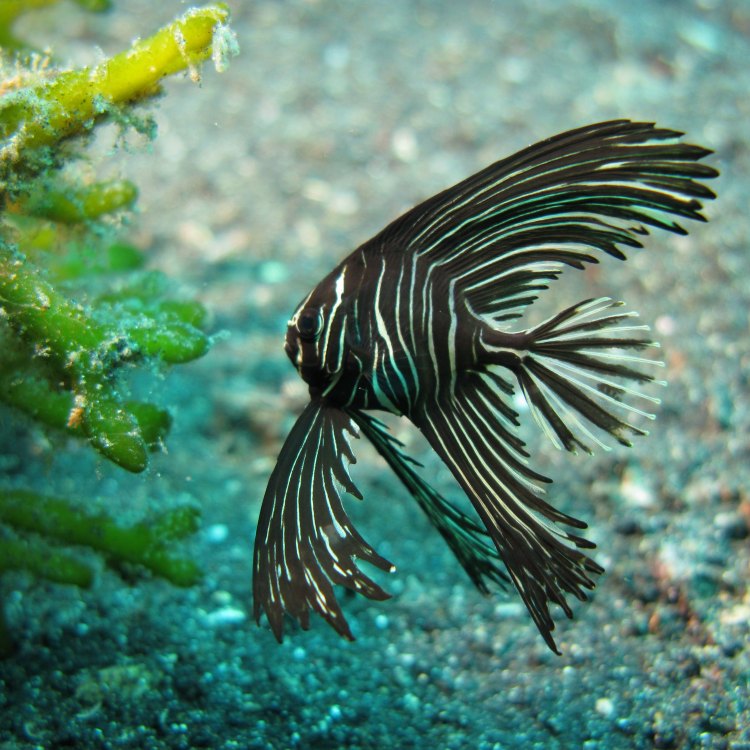
Zebra Fish
- Adult Size: 2.5-4 cm
- Average Lifespan: 2-5 years
- Reproduction: Oviparous
- Reproductive Behavior: Eggs are externally fertilized
- Sound or Call: Silent
- Migration Pattern: Non-migratory
- Social Groups: Schools
- Behavior: Social and active
- Threats: Habitat loss, pollution, and invasive species
- Conservation Status: Least Concern
- Impact on Ecosystem: Used as a model organism in scientific research
- Human Use: Aquarium fish, genetic research
- Distinctive Features: Horizontal black stripes on silver body
- Interesting Facts: Regenerate damaged fins, can be trained to respond to visual cues
- Predator: Predator to small invertebrates

Danio rerio
The Unique and Fascinating World of Zebra Fish
The underwater world is full of an incredible diversity of species, both big and small. Among these animals, there is a tiny yet fascinating creature known as the Zebra Fish. This small freshwater fish, with its distinctive black stripes and silver body, is a common sight in aquariums and also has a significant role in scientific research. In this article, we will delve into the unique features and behaviors of the Zebra Fish, and its impact on both the ecosystem and human use PeaceOfAnimals.Com.The Basics: Size, Lifespan, and Reproduction
The Zebra Fish, also known as zebra danio, is a small tropical fish species native to Asia. They can grow up to 2.5-4 cm in size, making them an ideal size for home aquariums. They have an average lifespan of 2-5 years in captivity, while they can survive for up to 3-5 years in the wild.Being oviparous, zebra fish reproduce by laying eggs rather than giving birth to live young. Interestingly, their reproductive behavior is quite unique. The female zebra fish lays eggs, and then the male fertilizes them externally. This means that the eggs are not fertilized inside the female's body, but rather as they are released into the water. This process is called external fertilization, and it is quite uncommon among fish species Zorse.
Behavior and Social Life
Zebra Fish are social and active creatures. In the wild, they live in large groups called schools, consisting of up to hundreds of individuals. Being a social species, they are known for engaging in various behaviors, from swimming and foraging for food together to even playing with each other. They are also known to be quite curious and have been observed to explore new objects in their environment.Interestingly, zebra fish do not make any sound or calls. They communicate with each other through visual cues and body movements. This silent behavior adds to the unique nature of this species.
Migratory Patterns and Social Groups
Unlike some fish species that migrate over long distances, zebra fish are non-migratory. This means that they do not undertake regular long-distance movements. Rather, they prefer to stay in the same area and only move to find food or suitable breeding partners.While zebra fish are social and active, they also have a hierarchical social structure within their schools. The larger and dominant fish take on the role of leaders and keep the group organized, while smaller and subordinate fish follow their lead.
Threats to the Zebra Fish
Zebra Fish face several threats in their natural habitat. The primary threat is habitat loss, which occurs due to deforestation, agricultural practices, pollution, and dam constructions. These activities can lead to changes in water quality and habitat fragmentation, making it challenging for zebra fish to find suitable breeding and living conditions.Pollution, particularly the release of toxic chemicals and heavy metals into the water, can directly harm the zebra fish and their habitat. Invasive species also pose a significant threat to this species. These introduced species compete for resources and can also prey on the zebra fish, leading to a decline in their population.
Conservation Status of Zebra Fish
Despite the threats they face, zebra fish are currently classified as "Least Concern" on the IUCN Red List of Threatened Species. This means that their population is stable and not at risk of extinction at the moment. However, continuous monitoring and conservation efforts are necessary to ensure their survival in the future.Impact on the Ecosystem
The zebra fish may be small, but they have a significant impact on their ecosystem. They play a crucial role as a middle-level predator in the food chain, feeding on small invertebrates and being preyed upon by larger fish. This helps to maintain balance in the ecosystem, preventing any one species from becoming too dominant.Moreover, zebra fish also have a unique feature that contributes to their impact on the ecosystem. They are able to regenerate damaged or lost fins, a skill most fish do not possess. This adaptation allows them to survive injuries and continue fulfilling their role in the ecosystem.
Use in Scientific Research
Besides being an important part of the natural ecosystem, zebra fish are also widely used as a model organism in scientific research. This is due to their small size, ease of maintenance, and transparent embryos. Scientists use zebra fish in various studies, primarily in genetics and developmental biology. These tiny fish have helped us gain a better understanding of genetic disorders and even potential treatments for diseases like cancer.Human Use: Aquarium Fish
Another way humans interact with zebra fish is through their use as aquarium fish. These beautiful and active fish are a popular choice for home aquariums due to their easy maintenance and vibrant appearance. However, it's essential to note that zebra fish should always be bred in captivity and never taken from the wild.Distinctive Features and Training Abilities
One of the most distinctive features of zebra fish is their horizontal black stripes on their silver body. These stripes make them an eye-catching addition to any aquarium.Another fascinating fact about zebra fish is that they can be trained to respond to visual cues. In a study conducted by researchers, zebra fish were trained to associate a flashing light with the release of food. This is just one example of how intelligent and adaptable these tiny fish can be.
Predator to Small Invertebrates
Despite their small size, zebra fish are fierce predators to small invertebrates living in the water. In the wild, they feed on insects, worms, and crustaceans, using their sharp teeth to catch their prey. This feeding behavior is essential for keeping populations of these invertebrate species in check.In aquariums, zebra fish are often fed commercial fish food, but they can also be fed live or frozen prey, which mimics their natural diet.
In Conclusion
The zebra fish may be small, but they have a unique and fascinating world that goes beyond their distinctive stripes. From their reproductive behaviors, social life, and impact on the ecosystem, to their important role in scientific research, these tiny fish deserve our admiration and respect. As humans, it is our responsibility to ensure their survival and continue learning from these incredible creatures. So, the next time you see a zebra fish, remember the incredible features and characteristics that make them truly one of a kind in the underwater world.
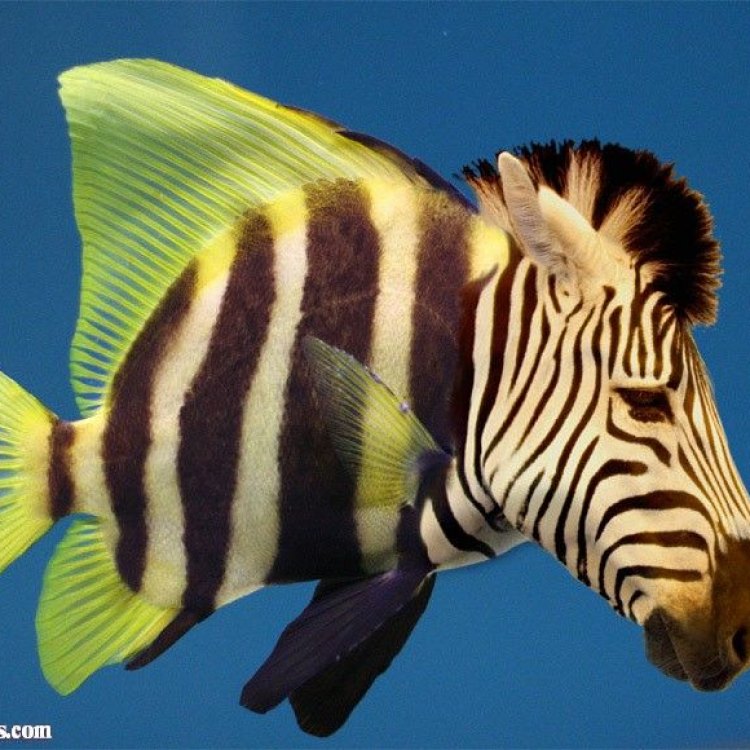
Zebra Fish: The Marvels of Nature's Colorful World
Disclaimer: The content provided is for informational purposes only. We cannot guarantee the accuracy of the information on this page 100%. All information provided here may change without prior notice.







